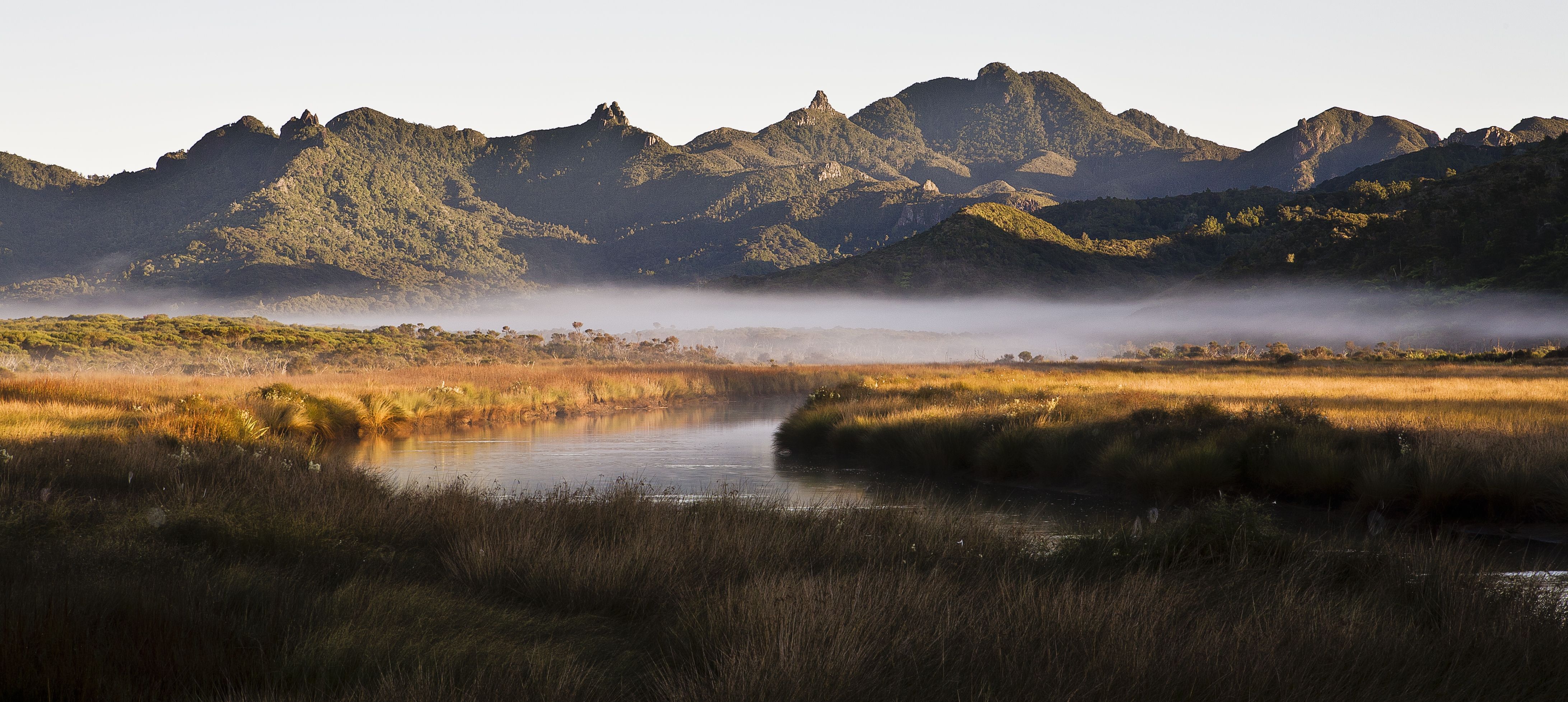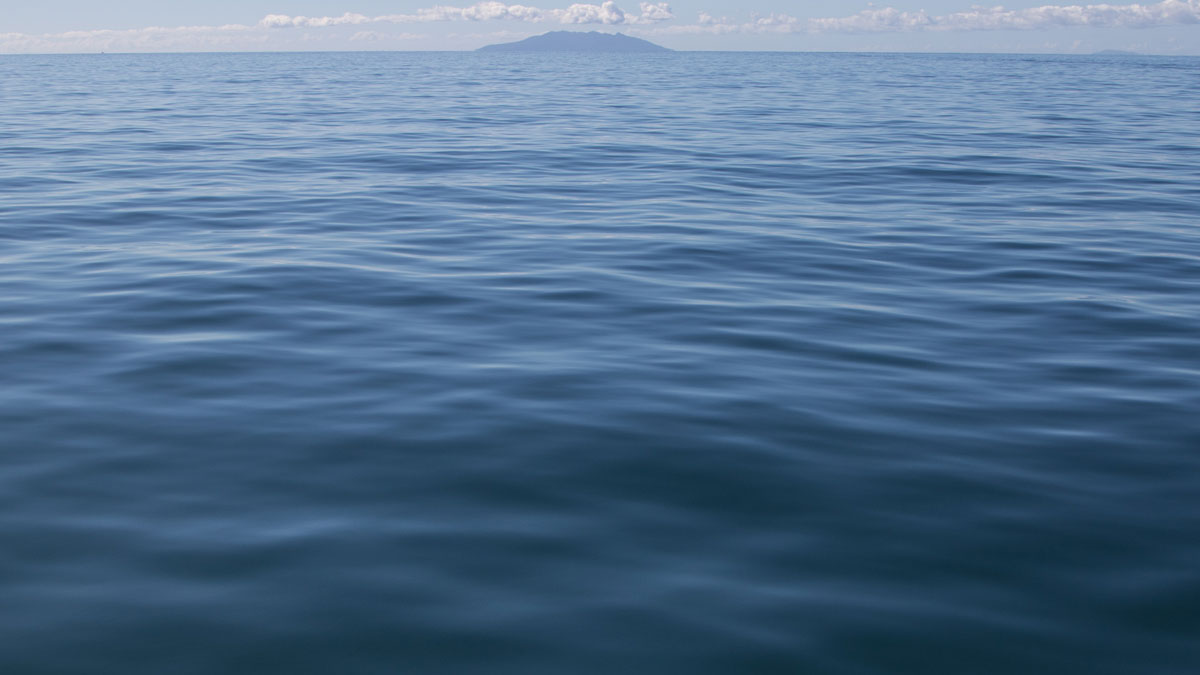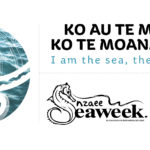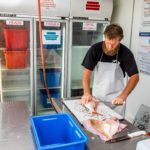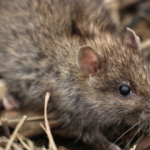No one wore gumboots as well as Noelene Ngawaka-Fortzer. They’re near-mandatory on Great Barrier Island – baby Barrierites are given tiny rubber booties at birth and you hear of mourners, graveside at Tryphena Cemetery, carefully tucking their best trousers inside their pair. Noelene’s were nothing special, plain scuffed Red Bands from memory, but when she pulled them on they looked like they were straight out of Milan.
You rarely meet someone this elegant yet without a trace of vanity. Thick, coal-black hair. Long, straight neck: Noelene just had something. A presence – a combination of humility, calm and quiet mana. You heard it in her voice. You got it in her words. And man she rocked those gumboots!
Photographer Chris Morton and I first met her in 2012 when researching our ‘Barrier book’. Our objective – “to explore the links between land, sea and people and how these combine – and collide – to create the Great Barrier whānau” – may have resonated in Grey Lynn cafes, but over on the Barrier, where locals do a brisk trade in hands-in-both-pockets wry retorts, it got us a few quizzical looks. Not from Noelene, though, who tucked us under a wing, then took us on a tour.
First to Windy Canyon, a wondrous wind tunnel fernery of kiokio, whekī and a thousand ponga. Mesmerised, we stood there gawping for half an hour, before Noelene ushered us across to a magical stairwell. You go first, she said to me, smiling.
Up 200 steps then there I was – King of the World! Bush tumbled down in front of me, all muted colours, understated in that New Zealand way. But there was plenty breaking the dark moss and green monotony here – needles and pinnacles, a rock tor that looked a lot like a Mayan sacrificial pyramid. Further on, a giant rhyolite iceberg floated down the valley. In the mid-distance, the Ōkiwi wetlands, home of the pāteke; behind this the crumpled hills and gullies of the Mabey farm, monochromatic in this light, but magnificent.
It’s such a startling view you hardly say anything and then, embarrassed at your silence, you start burbling. I had my Dictaphone on and was glad the wind masked my banal ‘majestic, magnificent… just breath-taking” banalities. I blamed the wind, too, for my slightly damp eyes. Noelene smiled – she knew.
From here you can see almost all of Aotea / Great Barrier, but its 285 square kilometres still seem puny compared to the ocean’s expanse. All this is – or at least was – Noelene’s domain. She whakapapas to Ngāti Rehua, part of the 7,000-strong Ngātiwai: their whenua is all coastal, stretching from Aotea, across the top of the Hauraki Gulf to Leigh, then up to the Bay of Islands as far as Motu Kōkako (The Hole in the Rock).”
“In days of old,” Noelene explained, “Aotea’s Ngātiwai would sail to the mainland. They’d stop at Pokohinu Island on the way to plant kūmara. They’d get to Whananaki and light the fire to let the whānau across the bay know they’re coming. They’d spend the summer up there, then around Easter time return to Pokohinu for the harvest, then back to the Barrier.”
Back to this gloriousness. There’s another photo in the book taken at the very top – the 627-metre maunga, Hirakimatā / Mt Hobson. It’s a joyous shot of Sir Peter Blake, tousle-haired, grinning, arms enveloping Lady Pippa. He loved this place: Great Barrier was, he said, his favourite island in the world. New Zealand in miniature.
New Zealand the way it used to be. It’s the Barrier’s unofficial tagline and it’s true it reflects a romantic notion of who we are (or would like to think we were). There’s no mains power on the island, no banks, no supermarkets. Just 1004 fraternal mavericks.
But beyond nostalgia and national myth, Aotea has something far more important to teach Aotearoa. Something raw, something real.

Noelene took us to Kawa Marae where her cousin, Rodney Ngawaka, picked up the story. “The Manaia Ngātiwai people were renowned like the Vikings,” he told us. “We were in our boats all the time. We’d go where the kai was… when you’re born in these waters, it never leaves you. Go anywhere you like, but that salt in your veins from the Ngātiwai coast stays with you forever.”
It had to. Because by 1894, Ngāti Rehua-Ngātiwai ki Aotea were virtually landless. Nearly 30,000 hectares, approximately 95 per cent of the traditional Ngāti Rehua-Ngātiwai ki Aotea rohe, was gone, most sold by chancers who never owned it, to a settler government uninterested in the details. “When you look at it,” says Rodney, “colonisation came through our doorstep. We were frontliners… we were the first to be colonised. [Yet] we’re still here in the 21st century – an original line of kaitiakitanga.”
And here’s the remarkable thing about the Barrier – and the Ngawakas. The relationship between and whenua and the original settlers is warm and increasingly merged. For Noelene, the old Pākehā families, like the Blackwells and Mabeys, who have been on Aotea for generations, are whānau. “We’ve always got on with those old families. This is home for them. This is their tūrangawaewae too.”
It’s a lovely – and heartwarming – sentiment to end. Unfortunately, there’s a tragic coda to the story. Noelene Ngawaka-Fortzer – sculptor, painter, weaver, craftswoman: 11th child of 13, wife of fisherman Ken, mother of five ridiculously gorgeous children and grandmother of a swelling fleet of mokopuna – died suddenly, of a heart attack on 23 August 2017. She was just 62. Her tangi was at Kawa Marae: stories about her were told long into the night at the newly opened wharenui – Rehua – where Noelene had designed all four kōwhaiwhai. By all accounts, it was an astonishingly beautiful week, though first-hand reports from mourners are rarely longer than a sentence before tightened throats finish them. At the end, a boat took Noelene home to Rangiāhua Island off Aotea’s west coast where she rests with her mother, her father, her tūpuna.
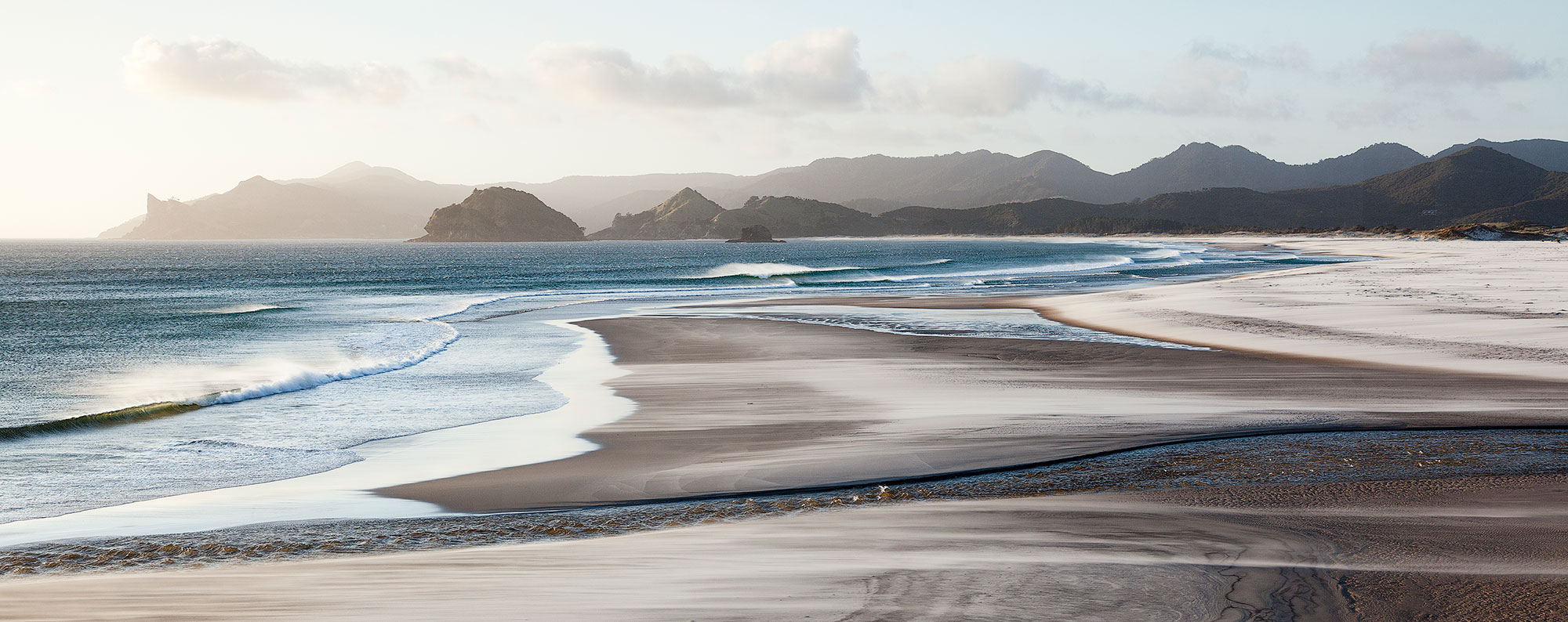
Peter Malcouronne and Chris Morton have paired up to produce “Aotea Great Barrier, Land and People”. Filled with Chris Morton’s spectacular and evocative photographs, and a thoughtful and authentic text from Peter Malcouronne, this work is a tribute to this ruggedly beautiful island and the community that love it. Chris and Peter have kindly provided photographs and this extract for the Gulf Journal.
The book can be purchased here or in bookstores throughout New Zealand.
Concept and Photography: Chris Morton. Writing: Peter Malcouronne


